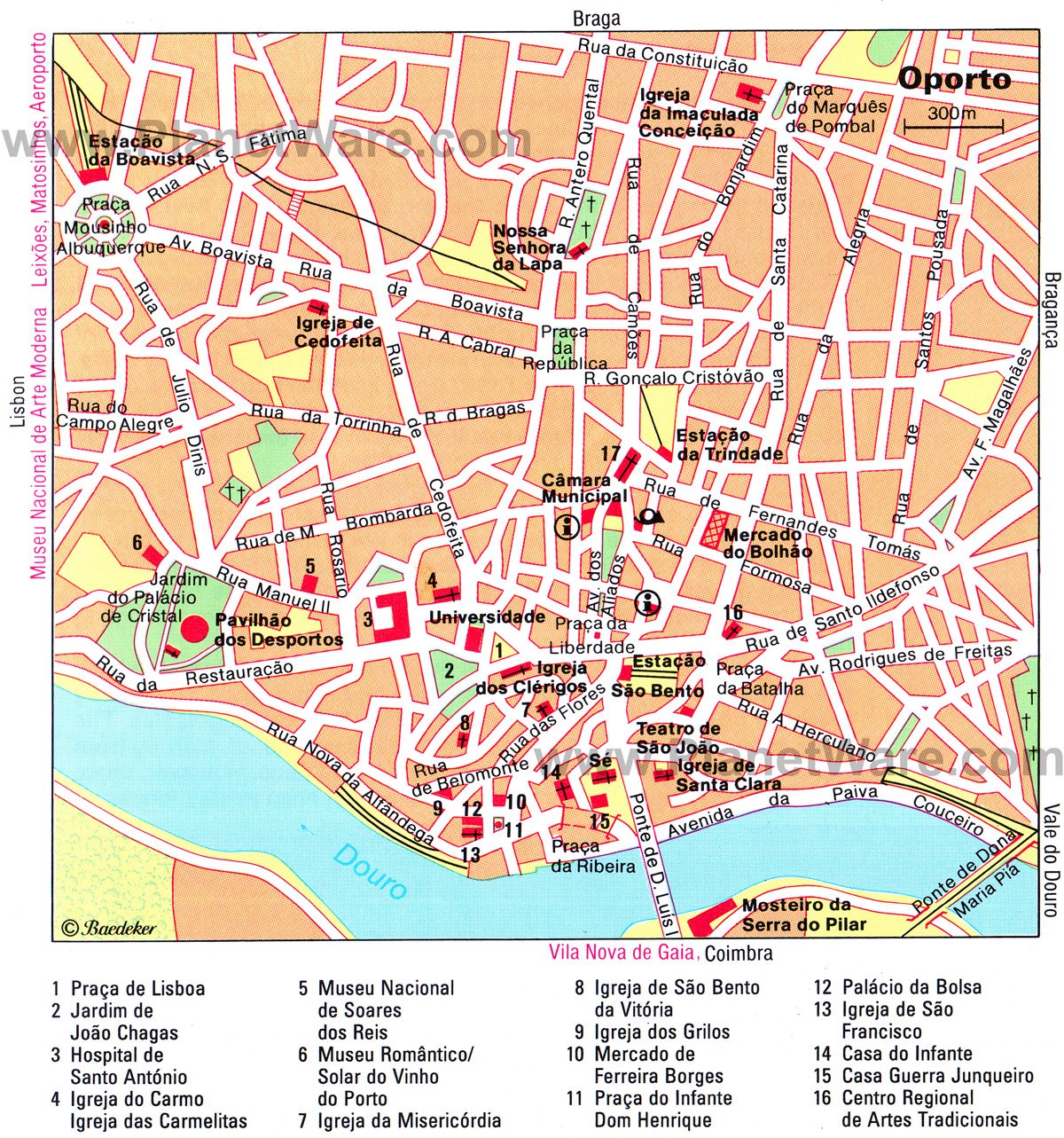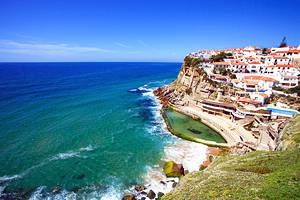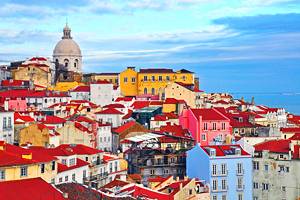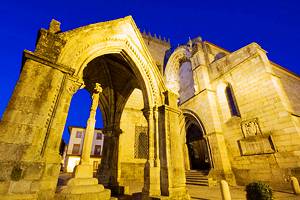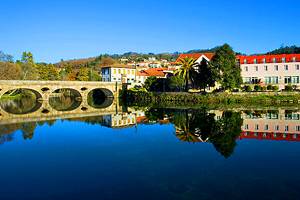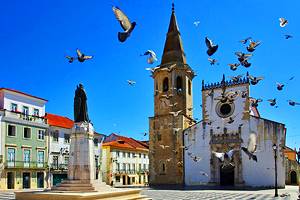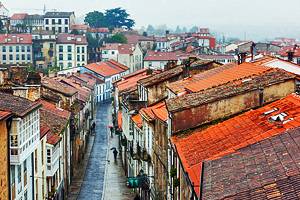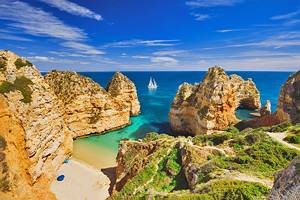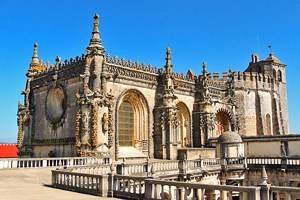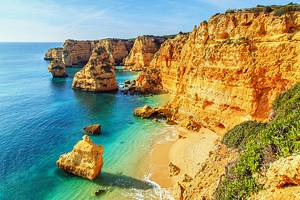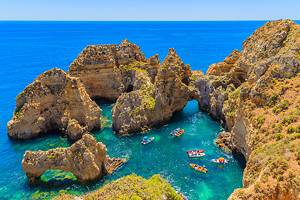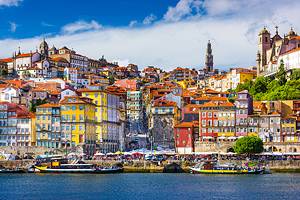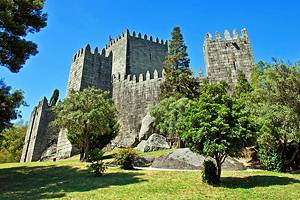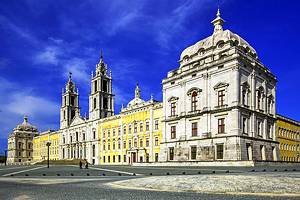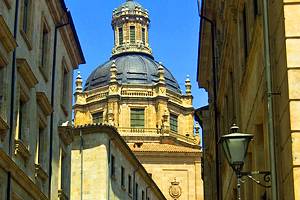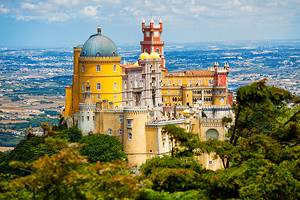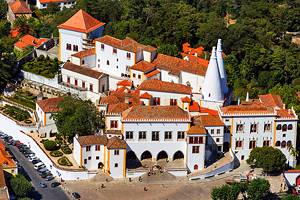Tourist Attractions in Porto
Porto is an easy city to fall in love with. From the moment you arrive, you'll be mesmerized by its historic center, which is filled with narrow cobblestone streets and picturesque squares, with tall colorful houses, Baroque churches, train stations, and stately neoclassical buildings with intricate blue and white tile facades dating back to the 14th century.
The city sprawls upward from both sides of the Douro River and is seemingly hewn out of granite cliffs at the mouth of the river, where it meets the Atlantic Ocean. It is a city that has it all. From rich cultural attractions to world-class museums and even surf beaches, there is no shortage of sights and activities to partake in.
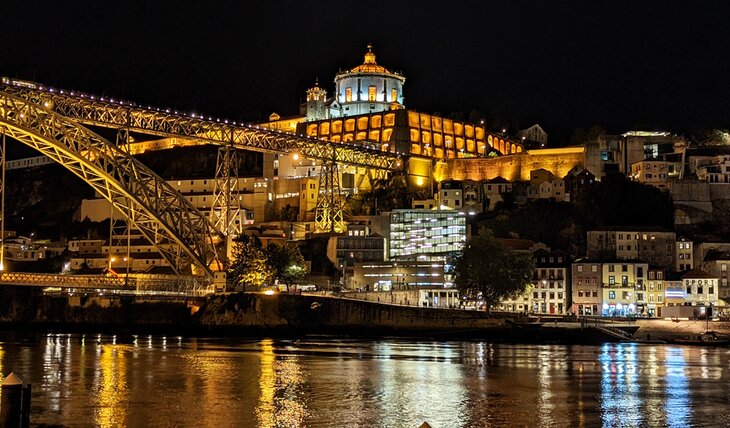
Porto is relatively compact and it's easy to explore on foot so long as you don't mind climbing some very steep hills. If you do get tired, however, the public transport system is good, and taxis and Ubers are plentiful. But half the fun of exploring Porto is wandering its cobbled Medieval streets and 18th-century accented neighborhoods on foot. Just be sure to pack some decent walking shoes.
The city's historical heart is the Ribeira. This waterfront bairro positively insists you lose yourself among the maze of narrow streets and seek out some of the city's most cherished architectural treasures. In fact, so rare and precious are the buildings that make up this venerable neighborhood that UNESCO declared it a World Heritage Site.
Meanwhile, the city's contemporary character is evident in its thriving modern arts scene and an alarmingly futuristic music venue. Crossing the bridge to Vila Nova de Gaia is a sightseeing highlight, as is a guided tour around one of the port lodges. Also consider a cruise along the Douro, and for a truly memorable city panorama take a ride on the cable car that glides from one end of the quayside to the other.
Considered Portugal's second city, after Lisbon, many will argue it is the more charismatic of the two cities. You'll have to experience it for yourself, following our list of top attractions, to decide.
- Torre dos Clérigos
- Palácio da Bolsa
- Porto Bridge Climb
- Igreja de São Francisco
- Cais da Ribeira
- Ponte Dom Luís I
- Sé (Cathedral)
- Vila Nova de Gaia
- Museu Nacional Soares dos Reis (Soares dos Reis National Museum)
- Parque das Virtudes
- World of Discoveries
- Igreja do Carmo
- Casa da Música (Music House)
- Fundação de Serralves Museu de Arte Contemporânea (Contemporary Art Museum)
- Café Majestic
- Centro Português de Fotografia (Portuguese Center of Photography)
- Porto Tram City Tour
- Surfing in Porto
- Avenida dos Aliados
- Frequently Asked Questions
- What is the best way to get from Porto's airport to the city center?
- What are the best shopping areas in Porto?
- What are the best beaches near Porto?
- What are the best day trips from Porto?
- What are the other must-see destinations in northern Portugal?
- Map of Tourist Attractions in Porto
Torre dos Clérigos
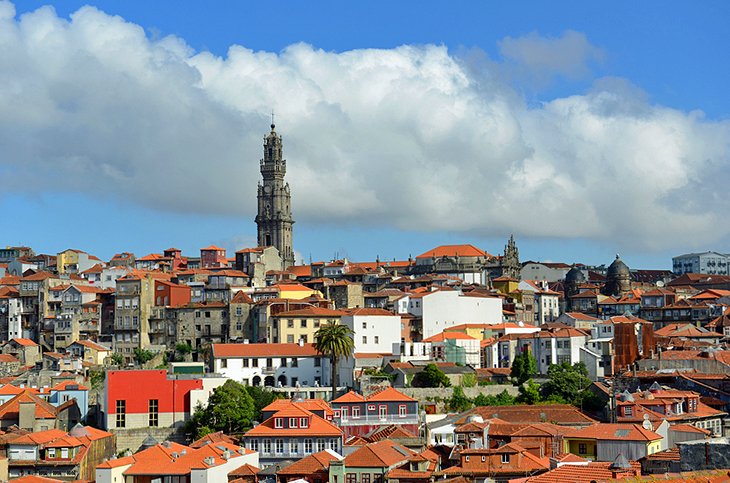
The soaring Clérigos Tower punctuates Porto's skyline like a monumental needle. This is the city's most visible landmark, a 75-meter-tall, 18th-century granite-hewn rocket, and visiting this historic structure should be high up on the "things to do" list.
You'll need a stout pair of legs to climb the 240 steps to the top of the tower, but the effort will be rewarded with a breathtaking panorama of the river, the coastline, and the distant Douro valley — a bird's-eye-view of Portugal's second largest city, and an inspiring way for first-time sightseers to get their bearings.
Commissioned by the Brotherhood of the Clergy (clérigos) and designed by the Italian-born Nicolau Nasoni, the Baroque tower complements the adjoining Igreja dos Clérigos, which is also Nasoni's handiwork. Built between 1732 and 1750, the church itself is a wonderful example of the architect's affinity with the Baroque and features an elliptic floorplan, one of the first churches in Portugal built in such a way.
But the tower remains the highlight and, day or night, its tapered profile stands as a historic beacon visible from most parts of the city.
Address: Rua São Filipe de Neri, Porto
Official site: www.torredosclerigos.pt
Palácio da Bolsa
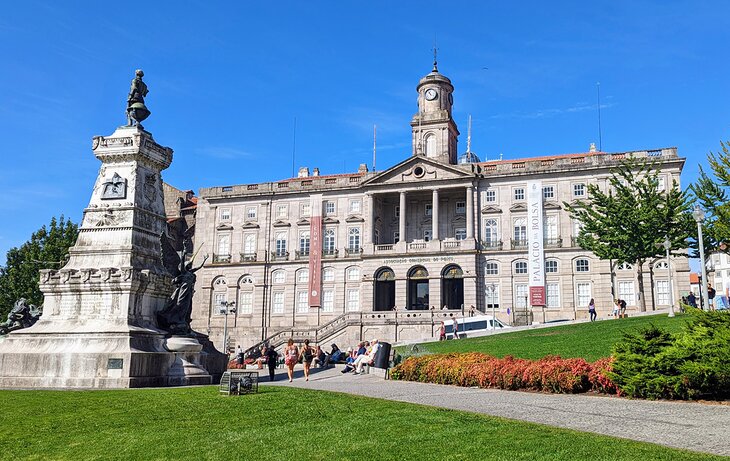
Dating from the mid-19th century, Porto's former stock exchange contains a wealth of historic interest. Built on the site of a Franciscan monastery, its sumptuous interior is divided into several rooms and salons, each one singular in its appeal and worthy of close scrutiny.
Pretend you're a wealthy merchant visiting on business as you wander through the Portrait Room with its gallery of uniformed monarchs, and then cast your eyes skywards after entering the Golden Room to admire its gilded stucco ceiling. You'll be ready for your meeting with the boss in the lavishly furnished Chairman's Room before joining fellow merchants in the richly decorated Court Hearing Room to witness mercantile law acted out in due process.
You may want to pop into the adjacent Juror's Room before gathering in the magnificent Hall of Nations to mingle with the great and the good. But you'll want to leave the best for last by sneaking off to the astonishing Arabian Room, inspired by Granada's Alhambra, and the one place that really sells a tour of the Bolsa.
Incidentally, the building is the headquarters of the Porto Chamber of Commerce, and its members still gather in the classical General Assembly Room.
Address: Rua Ferreira Borges, Porto
Official site: http://www.palaciodabolsa.com
Porto Bridge Climb
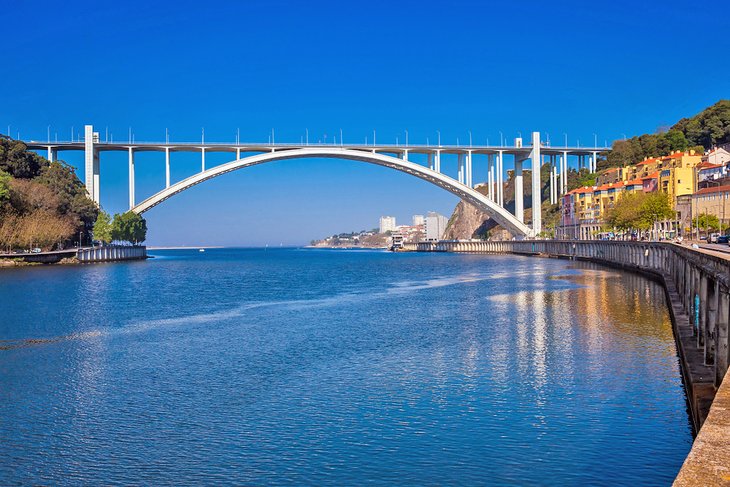
One of the more unusual things to do in Porto — and certainly a radical departure from the traditional sightseeing options — is the chance to climb the arches of the Arrábida Bridge, set downstream away from the more familiar Ponte Dom Luís 1.
The Porto Bridge Climb conducts guided tours of this iconic structure with participants attired in harnesses and secure lifelines in order to scale the lofty heights safely and comfortably. Following a narrow pedestrian staircase and connected by cable to a parallel handrail, visitors slowly scale the yawning arches to reach the top of the span, 65 meters above the River Douro. The panoramic views of the outlying city and the mouth of the river are truly memorable.
Descending the 262 steps reveals the size and elegance of this 20th-century engineering marvel, inaugurated in 1963 and currently the only bridge span in Europe that can be accessed this way.
Location: Cais do Bicalho, Porto
Official site: https://www.portobridgeclimb.com/?lang=en
Igreja de São Francisco
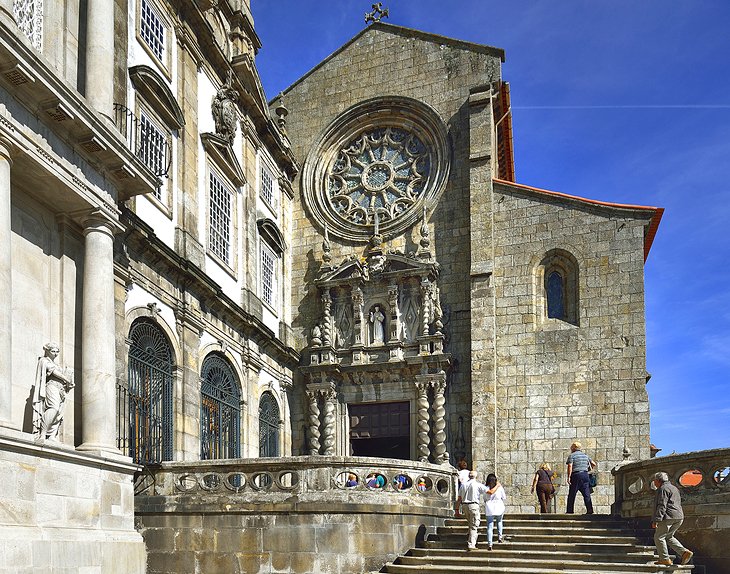
Visitors are shrouded by gold as they enter the beautiful church of St. Francis. Its 18th-century Baroque interior is encrusted with a gilded veneer so dazzling and exuberant that most agree this is one of the best examples of worked gold anywhere in the country. Indeed, this is a priceless sightseeing experience.
Gilt carving embellishes the high altar, columns, and pillars, with barely a single patch of stone left visible. Look out for smiling cherubs and dour-faced monks as you edge toward the north wall and São Francisco's Tree of Jesse, a family tree in gilded and painted wood depicting Christ's genealogy.
An extraordinary and beguiling artifact carved between 1718 and 1721, the tree boasts fine detail seen in the expressions of Jesus, Mary, and Joseph, and other figures, including King David, Solomon, and Jesse himself, which leaves onlookers speechless.
A tour of the ancient catacombs underneath the church helps bring visitors back down to earth, but there are more treasures from the church's monastery to behold in the museum afterwards.
Address: Rua do Infante D. Henrique, Porto
Official site: www.ordemsaofrancisco.pt
Cais da Ribeira

Porto's riverside quarter is an alluring labyrinth of narrow, winding streets; zigzagging alleyways; and low-slung, sun-starved arcades. Facing the River Douro, though, are terraces of lofty townhouses painted in bright mustard, tangerine, and tawny hues — the Ribeira is an adventure in color and flavor.
A plethora of restaurants and cafés set under the arches along the quayside makes this the most popular area in the city for relaxing and socializing. Praça da Ribeira, the riverfront square, is a popular and lively meeting point and buzzes with a young, friendly vibe.
This is also a busy commercial district, where grocers rub shoulders with butchers and fishmongers. Tiny, dilapidated shoemaker's studios echo to the industrious tapping of cobblers' hammers, and the rustic aroma of freshly baked bread collides with the Douro's salty, briny odor. Above it all, locals share gossip from balconies or open windows, shouting inexorably across lines of washing snapping in the breeze.
The Ribeira is also about history, and exploring this fascinating neighborhood is to discover medieval relics built over Roman foundations. UNESCO loves the place, and long ago declared it a World Heritage Site.
Ponte Dom Luís I
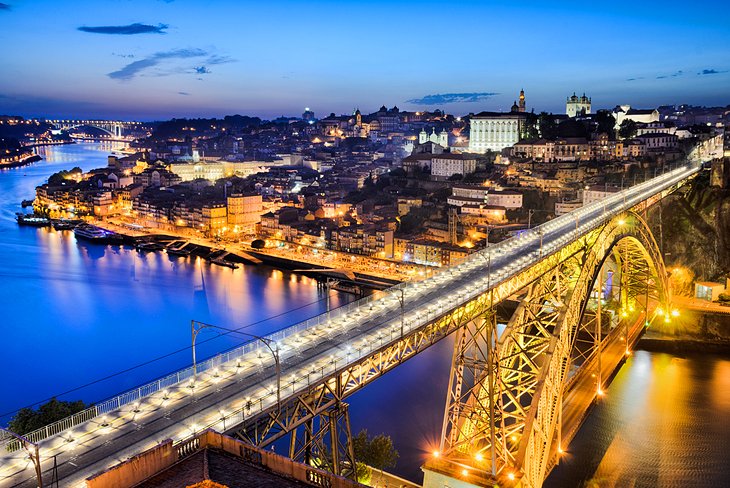
The grandiose Dom Luís I bridge is one of the most iconic structures in Portugal. Spanning the mighty River Douro to link Porto with Vila Nova de Gaia on the south bank, the bridge's majestic sweep and two-tier aspect is a binding component in the city's proud, social fabric.
The heavily riveted charcoal-grey ironwork has Gustave Eiffel written all over it, and indeed it was an assistant of the great French engineer who built the bridge in 1886. Commuters use the bridge on a daily basis — a road, Avenida da República, runs across the lower deck while the upper span accommodates a metro railway line.
Pedestrians can walk across using the narrow pavements set on either side of the road, or be really brave and traverse the structure using the 60-meter-high top-tier footpath.
An outstanding view of the bridge can be had from the terrace of the Mosteiro da Serra do Pilar, on the south bank. From here, the entire city forms a fabulous backdrop, and the panorama is particularly dramatic at dusk. Don't forget your tripod!
Sé (Cathedral)
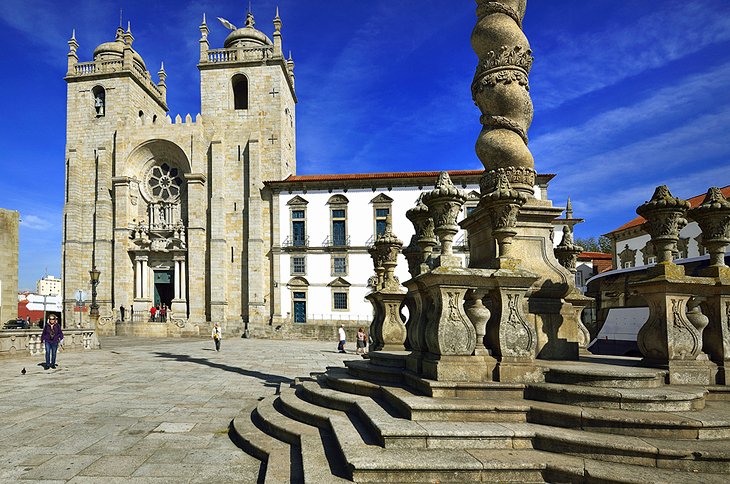
Sightseeing in Porto should always include exploration of the city's cathedral. In fact, the sweeping panorama from the terrace over the old-town streets and the sleepy River Douro is a great curtain raiser and primes the senses for what lies ahead.
An imposing 12th-century landmark, the cathedral has the appearance of a fortress, such is the forbidding look of its towers and the shadowy complexion of its façade. Redeeming features include a beautiful 13th-century rose window set in the west front, and the serene Baroque cloisters paneled with sky blue azulejo tiles. Linger here a little to absorb the medieval ambiance and the tranquil locale.
From here, a worn 18th-century granite staircase connects with the chapterhouse, which is wrapped in more stunning tile work. Another standout attraction is the magnificent silver retable in the small chapel to the left of the chancel.
Round off your tour by poring over the cathedral's dazzling hoard of gold and silver held in the Treasury.
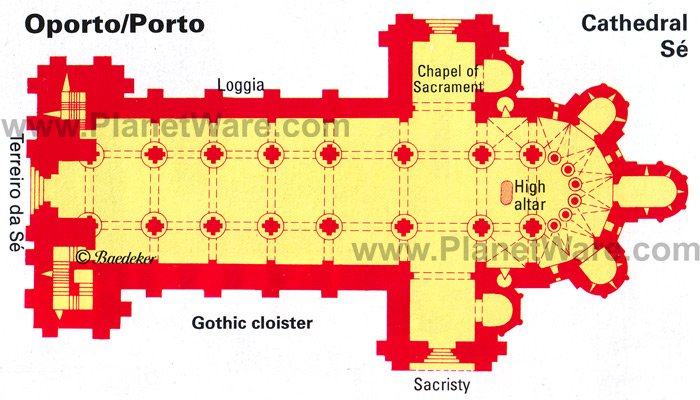
Vila Nova de Gaia
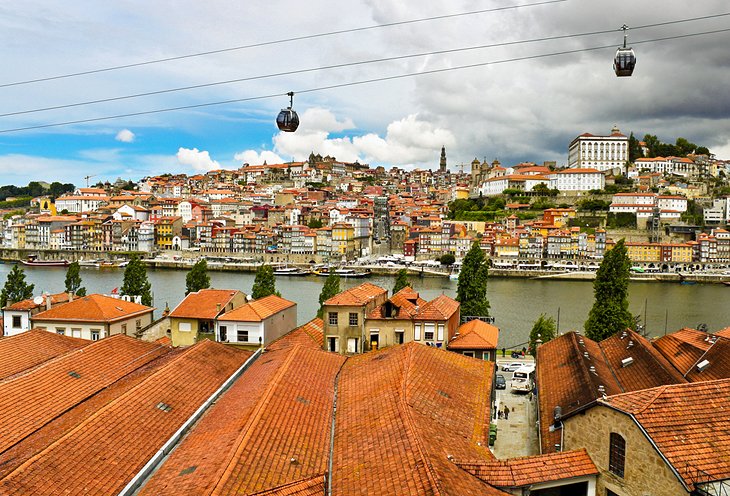
With its long, broad promenade and riverfront aspect, Vila Nova de Gaia is an irresistible diversion. Easily reached on foot by crossing the Ponte de Dom Luís I, the town's landscaped quayside is fringed by a long line of stylish restaurants and cafés. It's also the departure point for numerous Douro River cruise boats.
Adding a wonderfully nostalgic perspective is the fleet of traditional barcos rabelos moored alongside the esplanade. These graceful sailing vessels were once used to ferry casks downriver from the Douro port estates, and with Porto's Ribeira district providing a suitably romantic backdrop, sightseers are regaled with an atmospheric cityscape, a tableaux reminiscent of the 18th century.
For a truly dramatic outlook, take a ride on the Teleférico de Gaia, or cable car. This novel new sightseeing attraction runs along the Gaia riverside and connects the upper station, near the Mosteiro da Serra do Pilar, with the eastern end of the esplanade.
Location: Cais de Gaia, Porto
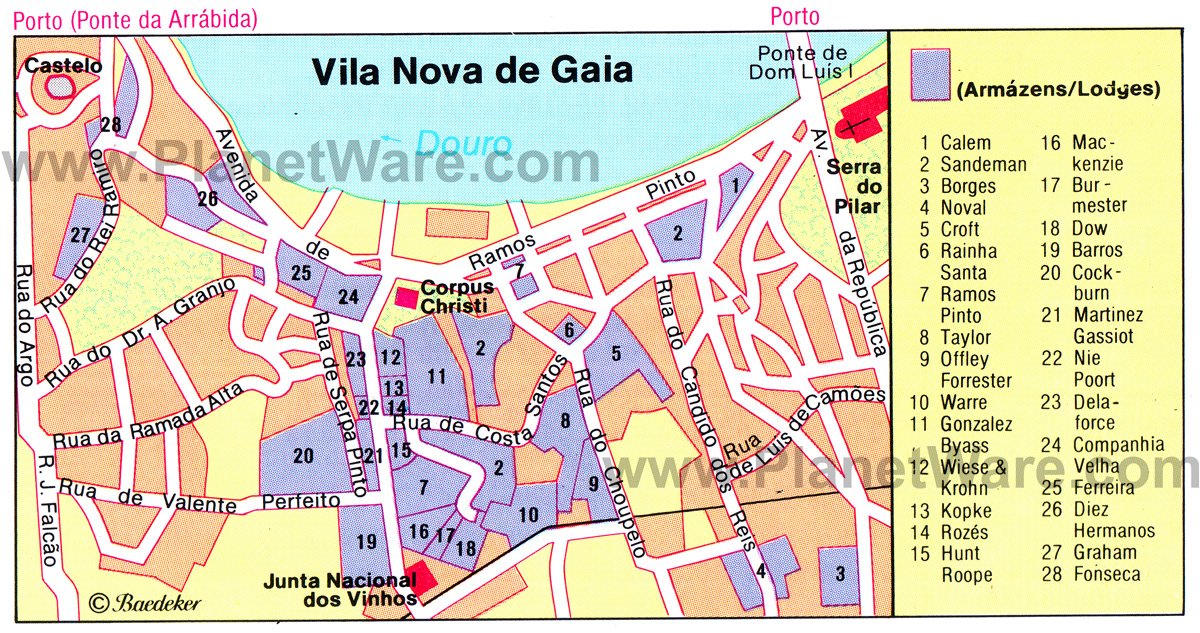
Museu Nacional Soares dos Reis (Soares dos Reis National Museum)

If you decide to visit just one museum in Porto, make sure it's this one. The outstanding collection of Portuguese art spans from the 16th to the 20th centuries and includes sculpture by António Soares dos Reis, the country's celebrated 19th-century sculptor after whom the museum is named.
The displays are wonderfully eclectic in their scope, with the gold and silverware particularly engaging. The collection of paintings showcases works by Portuguese and foreign artists, notably Dutch and Flemish. Fine Portuguese glassware from the 18th and 19th centuries complement rare ceramic pieces that include porcelain from China, and examples of Delftware.
Decorative furniture from as far away as India and Japan lend the exhibition an exotic veneer, while the textiles collection is mostly derived from fabrics and other materials that were confiscated from dissolved monasteries and convents.
Allow a good couple of hours to browse the various galleries and then explore the garden, perhaps before a bite to eat in the museum's cafeteria, where the lunch choice includes vegetarian options.
Address: Palácio dos Carrancas, Rua D. Manuel II, Porto
Official site: https://museusoaresdosreis.gov.pt/
Parque das Virtudes
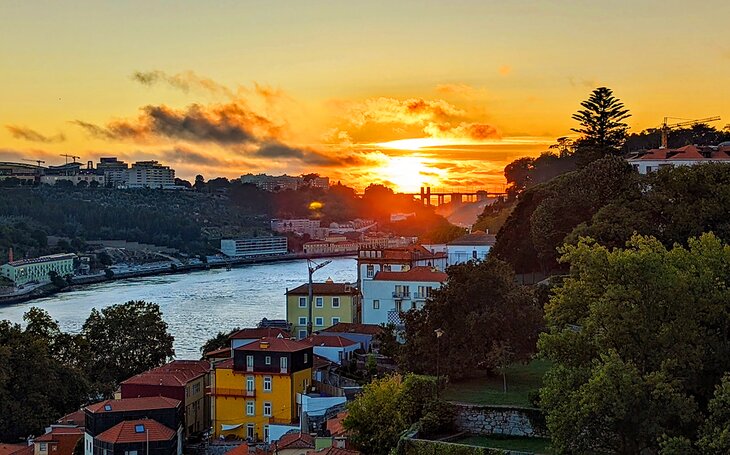
Set on a hillside overlooking the Douro River and the Ribeira neighborhood, Parque das Virtudes is the most revered local spot to watch the sunset on long summer days. Due to its western locale, Porto gets some amazing nightly fire shows, and you need to come here at least once on your trip.
You can grab a takeaway beverage from one of the cafes on the street behind the top of the park, take a seat in the grass or on one of the benches, and just breathe. People of all ages come for sunset, and you'll hear a mix of languages and maybe even be treated to some impromptu live guitar and drum sessions.
The park, which is really a terraced garden carved into the embankment above the river, has lots of tall trees and makes a great spot to plan a lunchtime picnic away from the crowds. Finding the entrance to the park can be difficult. Look for one on Rua Azevedo de Albuquerque and another behind the Palácio da Justica.
World of Discoveries
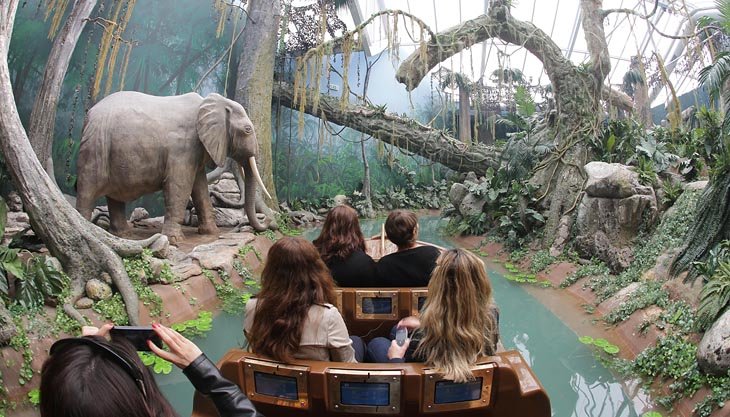
Portugal's remarkable period of conquest and exploration, the Age of Discovery, is re-enacted with astonishing effect at this slick interactive museum and theme park. The perilous voyages of 15th-century Portuguese navigators, setting sail in fleets of fragile caravels to chart unknown waters and map new lands, are brought to stunning life through a series of detailed exhibitions and screened animations.
But the real adventure begins after boarding a boat and journeying to countries discovered by the likes of Vasco da Gama, who in 1498 mapped a sea route from Portugal to India, and Pedro Álvares Cabral, who reached Brazil in 1500.
Wearing audio headsets, passengers are regaled with the planning and organization underpinning these ambitious maritime expeditions and also glean a fascinating insight into the history and culture of the various destinations colonized by the Portuguese during this period. In fact, this is a wonderfully engaging and educative experience and good fun for all ages.
Address: Rua de Miragaia 106, Porto
Official site: https://www.worldofdiscoveries.com
Igreja do Carmo
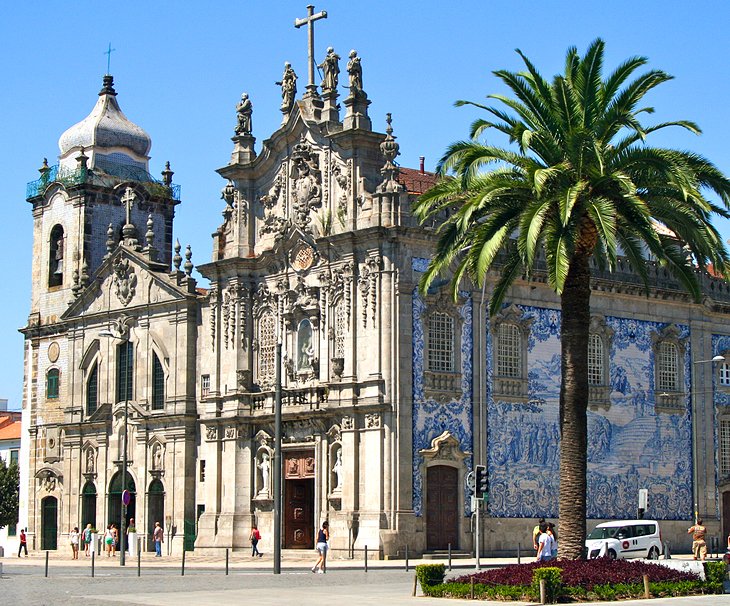
Plastering the exterior of Porto's 18th-century Carmo church is a blaze of blue and white azulejos (tiles), and the striking façade is one of the most instantly recognized in the city. The original azulejos found around the city date back to the 14th century when they were used as a key decoration element on streets, buildings, and monuments. Today, some of the tiles have been replaced by replicas after the originals were stolen.
The church's immense tile panel is a real head-turner, but the splendid gilt carvings that decorate the interior are equally appealing. In fact, the elegant golden-brushed woodwork is among the finest examples of Portuguese Rococo.
The neighboring Igreja das Carmelitas is less of an eye-opener. Incredibly, dividing both is a house, built to comply with an ancient law that stipulated that no two churches were to share the same wall.
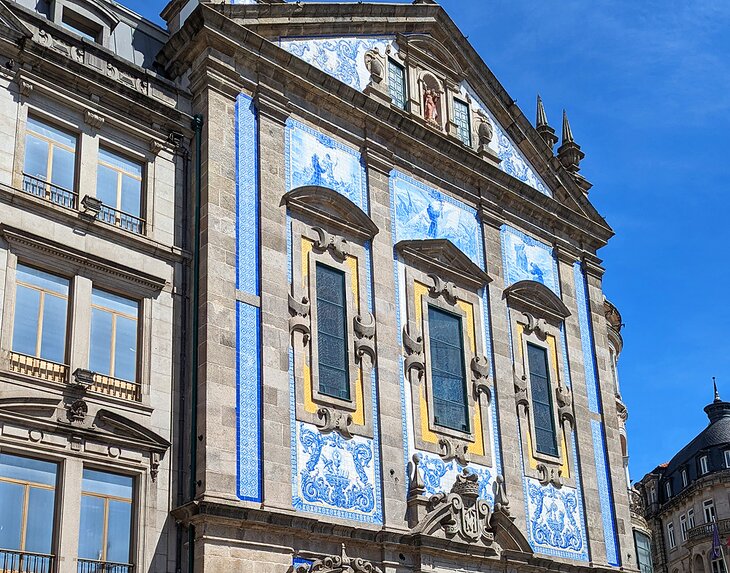
Many believe this to be the narrowest private residence in the country, although it's been unoccupied for nearly 30 years. A whimsical anomaly, the one-meter-wide abode makes for an interesting snapshot squeezed as it is between two granite monoliths.
If you enjoy seeing the azulejos also pay a visit to the nearby Sāo Bento train station. It is the most impressive example of this form of tile art. Here you will find floor-to-ceiling tile murals telling stories of Portugal's history. Another top spot for intricate tiling is found along Rua de Santa Catarina street.
Address: Rua do Carmo, Porto
Casa da Música (Music House)

Anyone staying in Porto for a few days should check out the cultural program on offer at this fabulous international concert venue. The "Music House" is celebrated as much for its radical design as for the caliber of the entertainment it hosts.
Dutch architect Rem Koolhaas kicked convention when he was commissioned to create a building that would propel the city headlong into the 21st century. This he achieved to great acclaim, and the best way to appreciate his triumph is to attend one of the many gigs staged within its bleached, odd-sided skin.
All musical tastes are catered for, anything from classical and fado, to jazz and hip-hop. World-class acts performing here include the late Lou Reed, who played the opening night back in 2005.
Another way to glimpse the interior is to walk up to the top-floor restaurant. On the menu of Mediterranean-influenced cuisine is an inspiring panorama across Porto's busy Boavista neighborhood. But for an unhurried, up-close-and-personal view join a guided tour. Otherwise, amble over here at dusk when the venue is washed with floodlight for a truly abstract perspective of this extraordinary structure.
Address: Avenida da Boavista 604, Porto
Official site: http://www.casadamusica.com/en/
Fundação de Serralves Museu de Arte Contemporânea (Contemporary Art Museum)
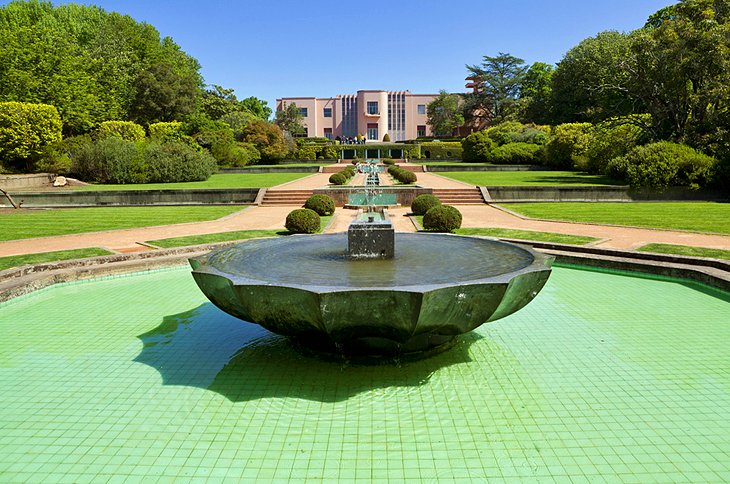
The influential Serralves Foundation runs Porto's highly respected Contemporary Art Museum. Designed by minimalist wizard Álvaro Siza Vieira, the chalk-white building is itself a cultural draw, an example of subliminal ergonomic architecture set in a verdant, meandering park four kilometers west of the city center.
The museum has eschewed a permanent collection and instead aspires to offer different perspectives on contemporary art in various media. This all adds up to an exciting and unpredictable visitor experience where, very often, you're left to make your own mind up about the meaning behind each piece and the intentions of the artist — in other words, this is modern art.
Also set within the grounds is the pink Art Deco Casa de Serralves, where other exhibitions are held. Discussions, arguments, and points of view can be exchanged in the on-site café or the more formal restaurant. The park is quite beautiful, a landscaped Eden of tremendous biodiversity. A series of footpaths snake through the 18 hectares, winding past spruce lawns, ornamented lakes, and aromatic herb gardens before circulating through a shady, wooded copse.
Address: Rua Sao Joao de Castro 210, Porto
Café Majestic
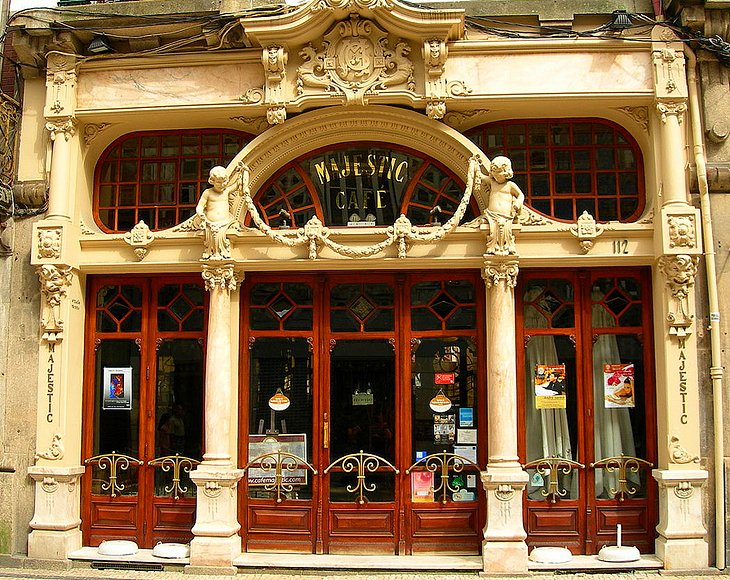
With its distinctive Art Nouveau façade of curvaceous stonework and undulating motifs, this sparkling gem of a coffeehouse is unmistakable.
Inside, a vintage 1920s ambience percolates the salon. Arranged throughout the lavish interior are the original carved wood chairs and marble-topped tables that lend Majestic its delightfully bohemian flavor. Cherubs and lamplights cling to the plasterwork ceiling. Gracing the walls are sets of huge Flemish mirrors that reflect the evocative, yesteryear character.
This is the most celebrated of Porto's cafés, and one of Europe's most historical. Lunch and dinner can be taken here in considerable style, the menu tempting with a fusion of Portuguese and Mediterranean flavors. The café is also known for its cakes and pastries selection, and conjures up specialties like French toast smothered in a creamy egg custard topped with dried fruit.
Kids will love it here, especially when they realize that author J.K. Rowling worked on the draft of her first book Harry Potter and the Philosopher's Stone while sipping coffee at a table near the entrance. Magic, or what?

Harry Potter fans will also not want to miss a visit to Livaria Lello bookstore (about a 12-minute walk away), which is said to have inspired Diagon Alley's premium bookstore, Flourish and Blotts, in the series. When JK Rowling lived in Porto, she would visit the more than 100-year-old bookstore on weekends. There is almost always a line to get into the bookstore today, and tickets cost 5 EUR, although you can get the money refunded if you buy a book.
Even if Harry Potter doesn't excite you, this bookstore is still a work of art. The interior is art nouveau at its finest and you'll want to climb the curved red staircase to the top. The bridge in the center of the shop, with a curve and dip at its middle, is equally impressive. Also make sure to check out the ceiling, which has a huge stained-glass window in it.
Address: Rua Santa Catarina 112, Porto
Official site: http://www.cafemajestic.com/pt/Utilidades/Homepage.aspx
Centro Português de Fotografia (Portuguese Center of Photography)
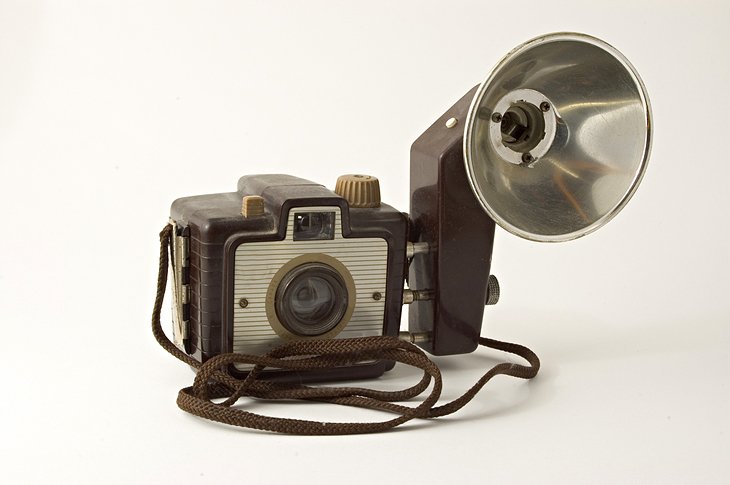
The Portuguese Center of Photography will appeal to anybody with an understanding of the photographic process. This engaging cultural facility is set within the walls of a former 18th-century prison, the Cadeia de Relação. The jail was closed in 1974, but its labyrinth of cells, various administrative offices, and the inner courtyard were all carefully restored and now serve as unusual exhibition spaces.
Exhibitions tend to focus on vintage and contemporary Portuguese photography, but a number of international photographers have seen their work exhibited as part of cultural exchange initiatives. Interestingly, photographs created digitally and those taken using traditional analogue methods share a more or less equal platform, so purists and fans of new imaging technology will be equally enthralled.
Most visitors, however, will be fixated on the collection of antique cameras and photographic equipment housed on the top floor. After musing over the miscellany of antique Linhofs, classic Leicas, and evergreen Kodaks, taking a photograph using a telephone will seem faintly ridiculous.
Address: Largo Amor de Perdição, Cordoaria, Porto
Porto Tram City Tour

Porto's historic center and the riverfront can be admired from a vintage tram during tours that take in several emblematic sights and cultural landmarks. Three different lines serve the destination, all offering a different perspective on Portugal's second city.
Line 1 begins near Ponte Dom Luís 1. Depart from here on the "Riverside Line" to trundle west all the way to the coastal town of Foz do Douro, situated at the mouth of the River Douro and known for its nearby beaches and coves. This leisurely excursion is a favorite option in summer when you want to escape the city heat.
Line 18 is a restored track, part circular in design, and the shortest ride. The route passes Igreja do Carmo and ends, suitably, at the Museu do Carro Eléctrico, the tram museum.
Arguably the most rewarding circuit in terms of sightseeing and attractions is the Line 22 tour. On this route, the streetcar clatters and hisses past Torre dos Clérigos, Igreja do Carmo, and Café Majestic, among other visual showstoppers.
Surfing in Porto
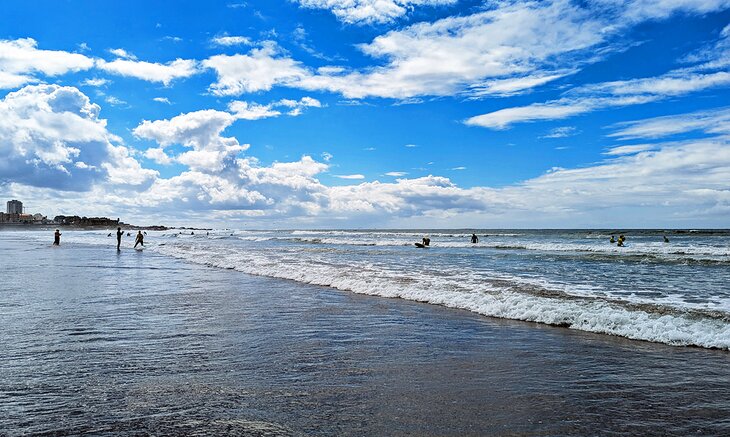
Porto is home to some of the country's best surfing for beginners, and you'll find breaks here to be consistent and less crowded than more famous spots in the Algarve to the south. A promenade runs for 1.6 miles from Foz do Douro to Matosinhos, which is a local favorite surf spot.
The beach has two breaks. One is in the protected harbor wall area, while the other is outwards from it. If you need a lesson or just need to rent some gear, there are plenty of surf schools and shops by the beach.
Avenida dos Aliados
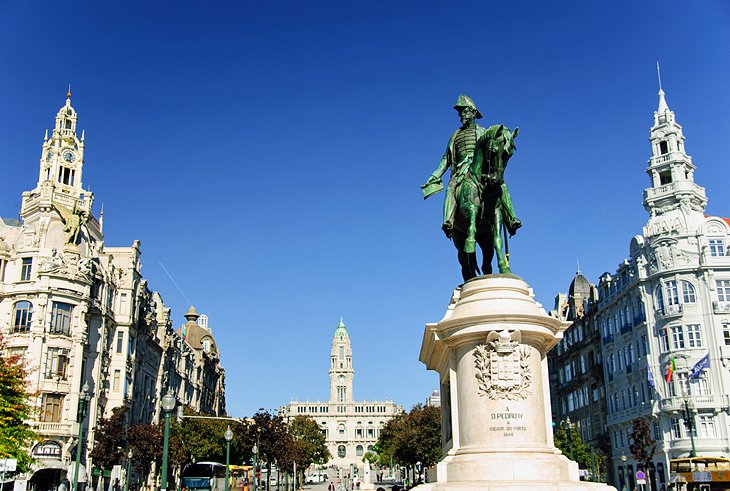
A vibrant and entertaining overview of everyday Porto can be gleaned by strolling the length of this broad double avenue. Lined on both sides with shops, stores, boutiques, cafés, and restaurants, "Aliados" is the city's clamorous commercial hub.
At the foot of the thoroughfare lies Praça da Liberdade, but visitors can begin exploring by popping into the nearby Estação de São Bento, Porto's central railway station, to gaze upon the 20,000 or so dazzling azulejos depicting early modes of transport and the history of Portugal.
A slow amble north will take you to the Câmera Municipal, Porto's city hall, which crowns the top of the avenue. From here, turn right along Rua Formosa until you reach the site of the historic Mercado do Bolhão.
The market hall is currently undergoing a much-needed refurbishment and is closed until at least the end of 2020. However, a temporary market has been created just beyond the main structure past the Bolhão Metro station. Here, you can still purchase fresh fruit and vegetables, meat, fish, household goods, and handicrafts. If you're traveling on a budget, stock up on cheese and freshly baked bread rolls and head back down the opposite side of the avenue to enjoy a picnic by the river.
Frequently Asked Questions
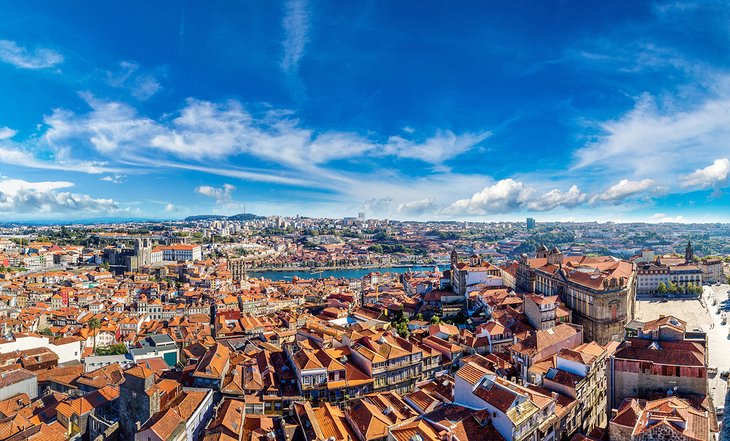
What is the best way to get from Porto's airport to the city center?
Porto's Sá Carneiro International Airport is located in Maia, 10 kilometers north of the city center.
You can easily get to central Porto using the Metro. Line E (purple) runs every 20 minutes during weekdays, and around every half an hour on weekends and holidays. Tickets can be purchased from vending machines or at the airport's tourist information office.
Conventional taxis and Uber circulate throughout Porto, and serve the airport.
What are the best shopping areas in Porto?
Pedestrianized Rua de Santa Catarina is lined with an interesting mix of international fashion chain stores and boutiques, and local, family-run businesses. The plush Via Catarina shopping mall is located here.
If you're in town on the second and last Saturday of every month, saunter along to Rua Candido dos Reis and the vibrant Mercadinho dos Clérigos. One of the city's most authentic markets, this is where to pick up decorative handicraft, vintage clothing, and antique objets d'art.
What are the best beaches near Porto?
Porto's proximity to the ocean affords some rewarding beach escape options. The upmarket seafront suburb of Foz do Douro, reached by bus and tram, sits at the mouth of the River Douro and serves as the attractive gateway to the city's nearest beaches.
Praia de Matosinhos: A locals' favorite, Matosinhos is the largest beach, with easy access to the city center, and is perfect for spending a lazy day in the sun. Regular Atlantic swells draw surfers and bodyboarders, and there are surfing schools based along the esplanade.
Praia do Molhe: A picturesque promenade replete with a 1930s-era pergola overlooks this pleasant pocket of sand. This is a lovely place to sit and watch the sun go down, perhaps over refreshments at the beachfront café.
What are the best day trips from Porto?
Several destinations make worthwhile day trips including Guimarães, located 57 kilometers northwest. Often called the "Cradle of Portugal" — a reference to the city's historical status as the birthplace of the nation — Guimarães glows under UNESCO World Heritage status for its well-preserved medieval quarter.
Journey another 20 kilometers north and you arrive at Braga, once the seat of Portugal's archbishops and still regarded as the country's ecclesiastical capital. Both these destinations can be explored by embarking on a small group tour from Porto.
A quick 45-minute drive east from Porto takes you to the beautiful riverside town of Amarante. Straddling both sides of the River Tâmega, this picture-perfect gem of a destination is forever associated with São Gonçalo, a 12th-century saint whose name belongs to the town's famous bridge, which crosses to the 16th-century Igreja e Convento de São Gonçalo.
What are the other must-see destinations in northern Portugal?
Porto is the gateway to northern Portugal, and the entire region has its own fair share of memorable places to visit.
High up near the border with Spain is the coastal city of Viana do Castelo. Try and time a visit to coincide with the annual Romaria Nossa Senhora da Agonia, a fantastic four-day costumed festival that takes place in August.
Vila Real is a convenient starting point from which to explore the upper reaches of the Douro Valley. The town is also roughly midway between Porto and remote Bragança, famed for its 12th-century walled citadel.
For a better idea of where to go and what to do, take a look at our Portugal itineraries page.

